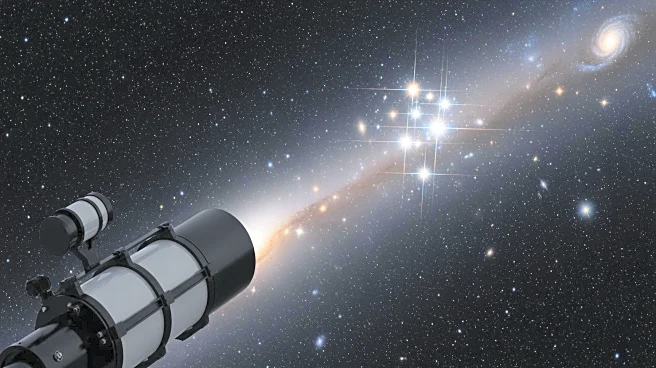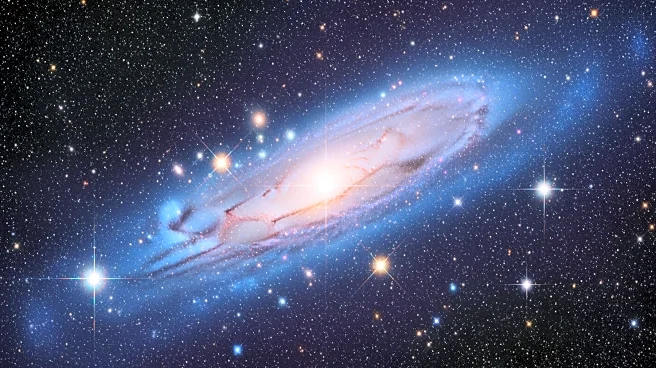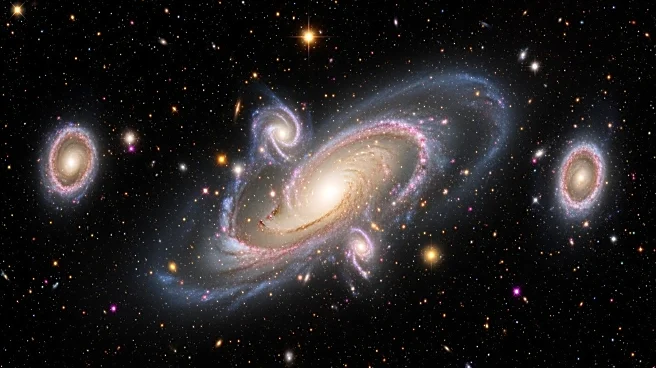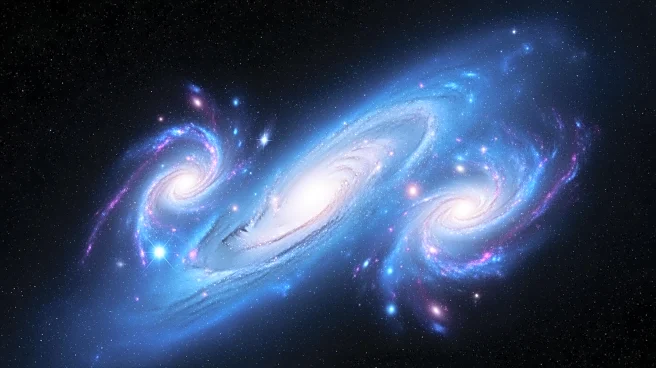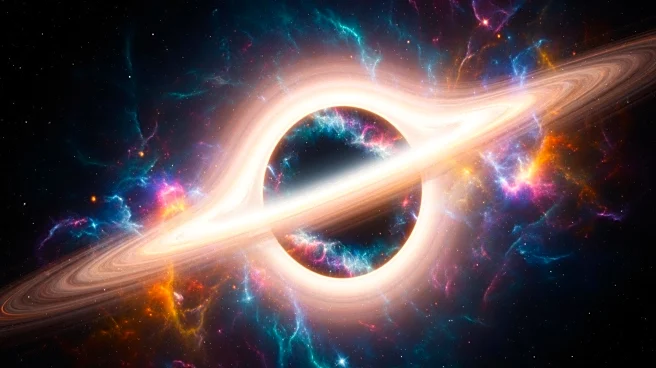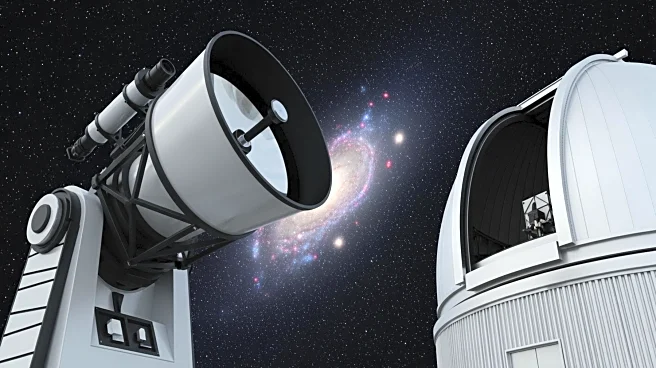What's Happening?
Astronomers, led by Ari Visbal from the University of Toledo, Ohio, have potentially identified the first generation of stars, known as Population III (Pop III) stars, through observations made by the James
Webb Space Telescope (JWST). These stars, believed to be composed entirely of helium and hydrogen with trace amounts of lithium, are thought to have formed around 200 million years after the Big Bang. The discovery was made in a distant galaxy called LAP1-B, where the stars appear to meet the three main predictions for Pop III stars: formation in small dark-matter clumps, extreme mass, and formation in small clusters. The findings, published in The Astrophysical Journal Letters, suggest that the Pop III stellar system formed in a dark matter clump around 50 million times the sun's mass, with stars ranging from 10 to 1,000 times the mass of our sun.
Why It's Important?
The potential discovery of Pop III stars is significant as it provides a glimpse into the early universe and the conditions that prevailed shortly after the Big Bang. These stars are considered primordial relics, and their study could offer insights into the formation of the first galaxies and the evolution of the universe. The identification of these stars also supports theoretical models of star formation and the role of dark matter in the early universe. If confirmed, this discovery could pave the way for further research into the origins of the universe and the processes that led to the formation of complex structures like galaxies and galaxy clusters.
What's Next?
While the discovery is promising, further confirmation is needed to definitively classify these stars as Pop III. Researchers will continue to analyze the data and may use additional techniques, such as gravitational lensing, to study other distant objects. This approach could help identify more Pop III candidates and provide a deeper understanding of the early universe. The ongoing research will also focus on refining computer models to better capture the physics of the early universe and the behavior of the first supernovae.
Beyond the Headlines
The discovery of Pop III stars could have broader implications for our understanding of cosmic evolution and the role of dark matter in star formation. It may also influence future astronomical research and the development of new observational techniques. The study of these ancient stars could lead to a reevaluation of existing theories about the early universe and inspire new hypotheses about the formation of the first galaxies and the distribution of matter in the cosmos.
